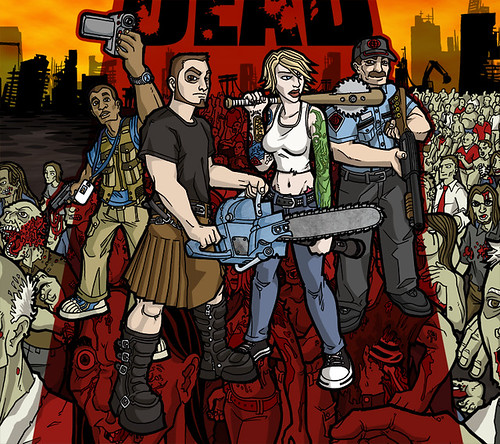Much goings on… er, going on in the last few months. Once more, and to no surprise to anyone, I have sadly not reported any of it here.
Let’s see. First and foremost, Sweets got laid off from the bakery she was at — who took her on as an extern when she was in culinary school, then hired her to do cakes, couldn’t give her a lot of hours, then realized that they were perfectly happy using the free extern labor from the school instead, and let her go. Tears and curses aside, it was a fantastic learning experience for her and gave us the motivation to…
… start taking the first steps to get Curious Confections off the ground. The first serious steps. We spruced up the site — making it more making it professional in appearance — added a menu, and lightened up some of the ambiguous language about actually making product for sale.
Sweets is going to make Curious Confections a part-time job for the interim, while maintaining a second part-time job at an established business. I will be moonlighting after work hours and on weekends as a CC employee. We’ve started getting a few orders in — some of them steady — and friends and co-workers have rallied to the cause by ordering stuff from us, and pressing our business cards into the palms of everyone they know. The goal is to eventually get enough business to pay Sweets a salary, making CC her full-time job.
We need all the help we can get to make this first step successful, allowing us to grow and evolve to the next level, and then the level after that, ad infinitum. We’re trying to maintain a fine balance between slow, steady growth so we don’t overextend our current reach, and reaching just far enough outside of our current comfort level to force us to evolve. Just as too much water, sun and fertilizer can kill even a healthy plant — we don’t want to die on the vine from too much of a good thing burning us out too early.
Sweets is also taking the role of food blogger more seriously. There are a few reasons behind this: foremost, she really enjoys writing about the stuff we make (out of pride and great satisfaction), it’ll help direct more traffic and attention to Curious Confections, it’ll bring her and CC to the attention of other food bloggers (many of them local), and she can be a part of a community of like-minded people (which is always a good thing). A fresh audience and new friends can work wonders on so many levels.
All cake, baked goods, and Curious Confections related projects will henceforth be posed over there, and links to said posts will be posted here. I may even pop in and write about the things I have my snobbery badges in: coffee, beer, homebrew, and South Louisiana food.
On the topic of homebrew, we have two batches of beer in bottles ready for consumption by this weekend: the Belgian Devil (a Duvel-like Belgian golden ale), and the Bayou Headsucker (a crisp, clean, refreshing kolsch ale). The Headsucker was specifically brewed for the crawfish season this year, and our first boil is this Saturday.
You may have noticed the unusual beer names. Good for you. We’ve decided to cater to my infantile obsession with zombies and theme all the beers that way. Our “brewery” is named Ol’ Shambler Brewery. While making labels for beer that will eventually be drunk, then have the labels stripped right back off again may seem a bit needless, we wanted to have fun with this hobby from start to finish. To that end we have enlisted (entrapped!) two of our talented friends, Marty and Kim, to help design and color said labels… and they’ve done a hell of a job so far. I’ll post the artwork separately, another time – gotta’ save some stuff for other posts!
We’ve also started fermenting our first mead — a traditional, sweet-semi-dry variety — using raw, unpasteurized orange blossom honey from a local apiary. It’s coming along nicely, but won’t be ready to drink for till about this time next year. Sadly meads, hard ciders, perrys, and wines of all stripe are not “young” beverages, and require an extended conditioning period ranging from a few months, to well over a year depending on the style. Our patience should be rewarded, and is all the more motivation to have a number of batches going at once.
The downside to home brewing is equipment and supply storage. It takes up some space, man, and it’s a struggle to store everything so that it 1) isn’t underfoot, and B) isn’t unsightly. I don’t want to just plonk it all down in a spare bedroom and shut the door, but I don’t want it to sit in the garage or attic gathering dust and who-knows-what-else. I also want to have access to everything as I need it without having to go dig it out of a storage area. We have plans to, eventually, build cabinetry into the bar — when we build the bar — to store homebrew gear and fermenting batches out of sight, but accessible.
That, my little ones, is all I have to ramble about at this time. Be good to each other, even if it means being naughty. Especially if it means being naughty.



